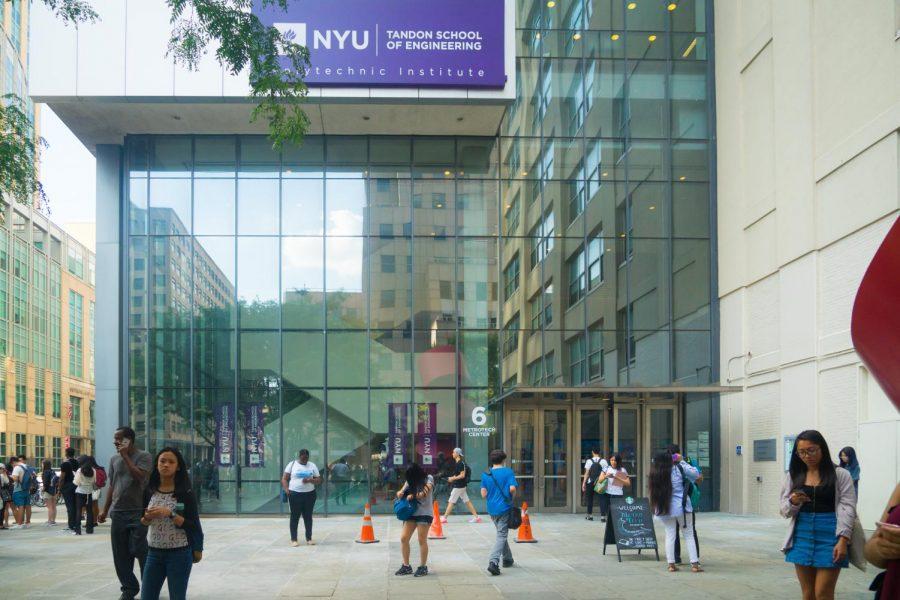A new study released by researchers from NYU and Princeton University shows that asking young girls to “do science” rather than “be scientists” increases their likelihood to be engaged with the subject. The study, which primarily focused on children in pre-K, found that this simple change in language encouraged more girls to figure out and evaluate scientific problems.
Principal Investigator of the study and NYU Associate Professor of Psychology Marjorie Rhodes has conducted a series of studies on how language informs children’s stereotypes and worldviews. According to her research, children often develop ideas about social groups through their knowledge of generic claims, in which a generalization is made that can often be gendered, such as “girls like pink.”
While conducting her studies, Rhodes noticed that children hear such claims about scientists through language in schools, adults in their lives, books and even educational television like PBS. These generic claims often reinforce the idea that scientists are typically men.
“[The gendered language] could lead [children] to think that scientists are distinct from non-scientists and that you can either be a scientist or not a scientist,” Rhodes said. “This could be a problematic way of thinking about it.”
The lab designed an intervention program that trains teachers to connect lessons to the idea of doing science, which can be as easy as explicitly mentioning an activity is scientific or telling a class “Let’s do science today!” The idea is to implement a more action-focused approach to language rather than using generic claims, which correlate with the formation of gendered ideas.
Amanda Cardarelli, a research coordinator at the lab, heads the intervention program. She said that she previously noticed that teachers don’t always connect science lessons to the idea of doing science.
“It’s surprising, but I guess they think it’s maybe too confusing for kids that age because it is pre-K, but that’s also such an important time,” Cardarelli said. “That’s [where they get] their fundamental learning and their fundamental understanding of everything, so if we can instill these positive beliefs about their own self-efficacy in science, then that would be great.”
The training began in October and was implemented in New York City pre-K classrooms. The program provides teachers with an instructional video to watch and a lesson plan to work on with students. Teachers also record themselves in the classroom so researchers can evaluate how the language used in the classroom impacts students’ perceptions of their abilities.
The intervention program also developed an app that students work with on tablets in the classroom and allows researchers to look at how many children are interested in science and if the children themselves think they are good at science.
This training has been implemented across 150 schools in all five boroughs. Researchers will spend a week at a certain site, working at anywhere between four to 15 sites in a given week. With classes averaging between 15 and 18 students, Cardarelli estimates the training has reached some 2,000 students.
Diana Abraham, a pre-med CAS sophomore studying biology, said that even though her mom is a physician and her family always encouraged her to pursue science, she was conscious of the gender disparity in her field, even as a student in middle school.
“I think it was a big kind of a challenge because in most of the science classes I was in, there were more males than females,” she said. “So it’s kind of hard to find a [sense of] belonging in science growing up.”
Data released by the National Center for Education Statistics shows that in the 2015-2016 school year, women made up fewer than one third of students earning STEM degrees.
Rhodes has another study under review which examines how an action-focused linguistic approach applies to children of different socioeconomic backgrounds and races. She’s found that in a more diverse sampling, all children, regardless of gender, benefit from the phrasing of “doing science.”
Rhodes and her team hope that changing the language used in the classroom will encourage more children to feel confident in their ability to do science, regardless of background.
“We don’t think that just changing language will address gender gaps in science,” Rhodes said. “There’s clearly a lot of structural factors and other things that have to happen as well. But we do think that one concrete step we could take is to use language that’s more inclusive and can encourage all children to think they can succeed in this area.”
Email Bethany Allard at [email protected].























































































































































